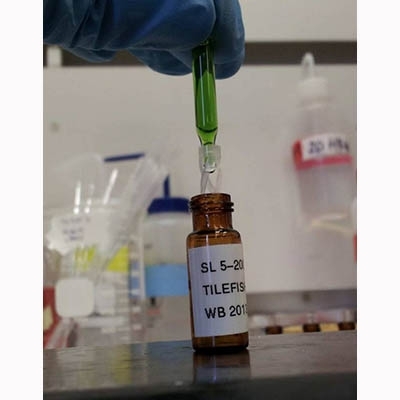
PAH Exposure in Gulf of Mexico Demersal Fishes, Post-Deepwater Horizon
Following the 2010 Deepwater Horizon (DWH) blowout, we surveyed offshore demersal fishes in the northern Gulf of Mexico (GoM) in 2011-2013, to assess polycyclic aromatic hydrocarbon (PAH) exposure. Biliary PAH metabolites were estimated in 271 samples of golden tilefish (Lopholatilus chamaeleonticeps), king snake eel (Ophichthus rex) and red snapper (Lutjanus campechanus), using high performance liquid chromatography with fluorescence detection. Mean concentration of naphthalene (NPH) metabolites in golden tilefish (240µg g-1) was significantly higher (p=0.001) than in red snapper (61µg g-1) or king snake eel (38µg g-1). Biliary NPH metabolite concentration decreased over the study period in red snapper (58%) and king snake eel (37%), indicating likely episodic exposure, while concentrations were persistently high in golden tilefish. Naphthalene metabolite levels measured in golden tilefish are among the highest concentrations measured in fishes globally, while concentrations for red snapper and king snake eel are similar to pre-DWH levels measured in GoM species. In contrast, concentrations of benzo[a]pyrene metabolites were similar for all three species (p=0.265, mean 220ng g-1) and relatively low when compared to GoM, global data and previous oil spills. These data support previous findings that fish life history and physiology play significant roles in exposure and uptake of PAH pollution.


